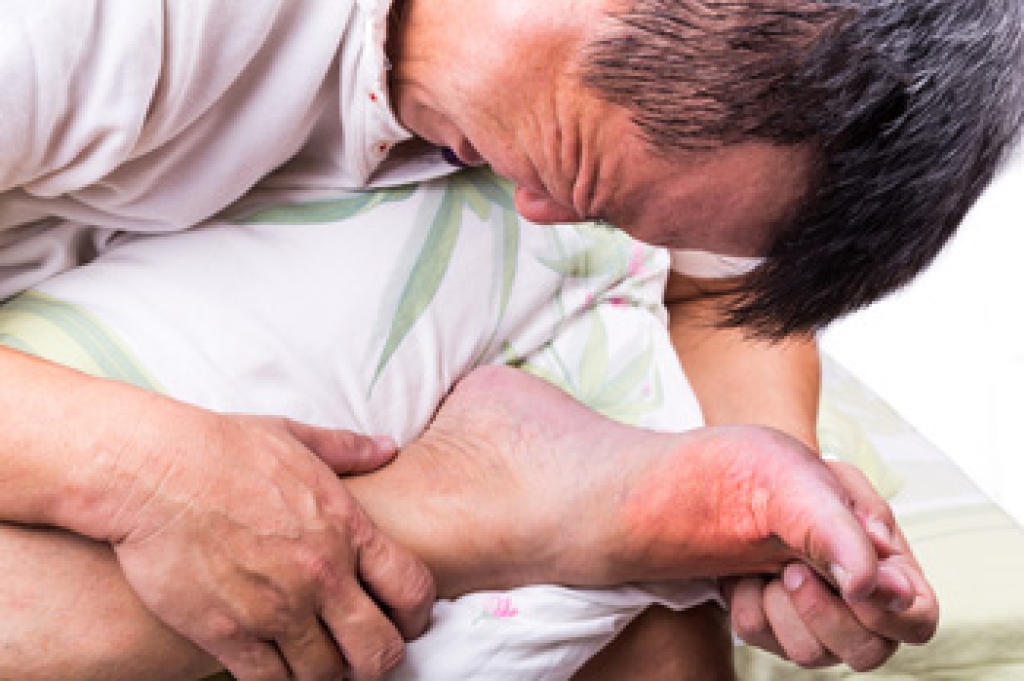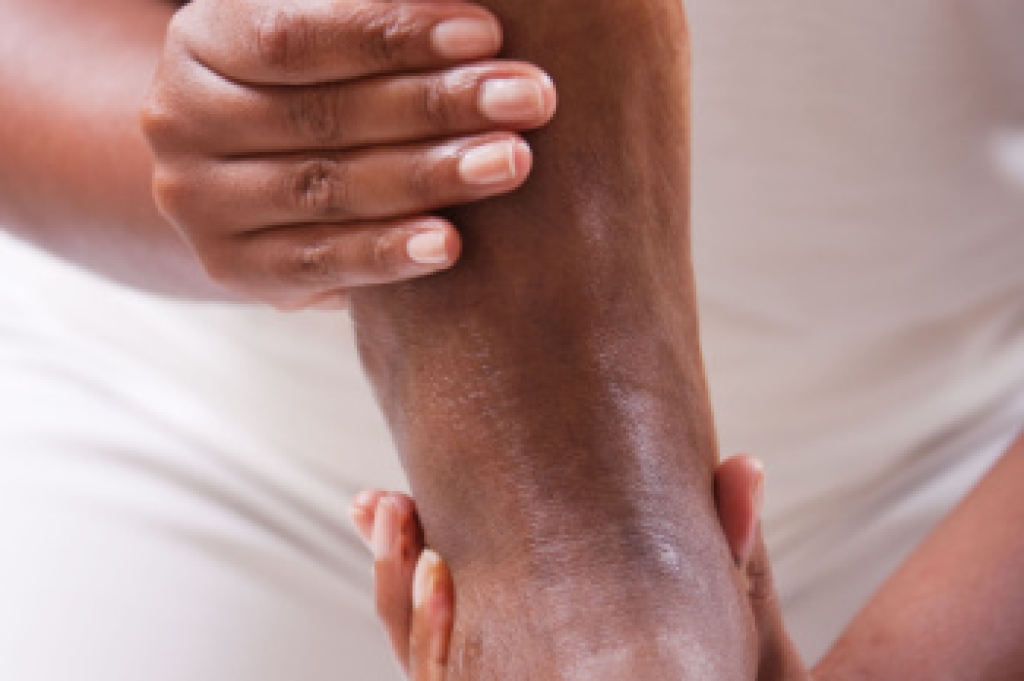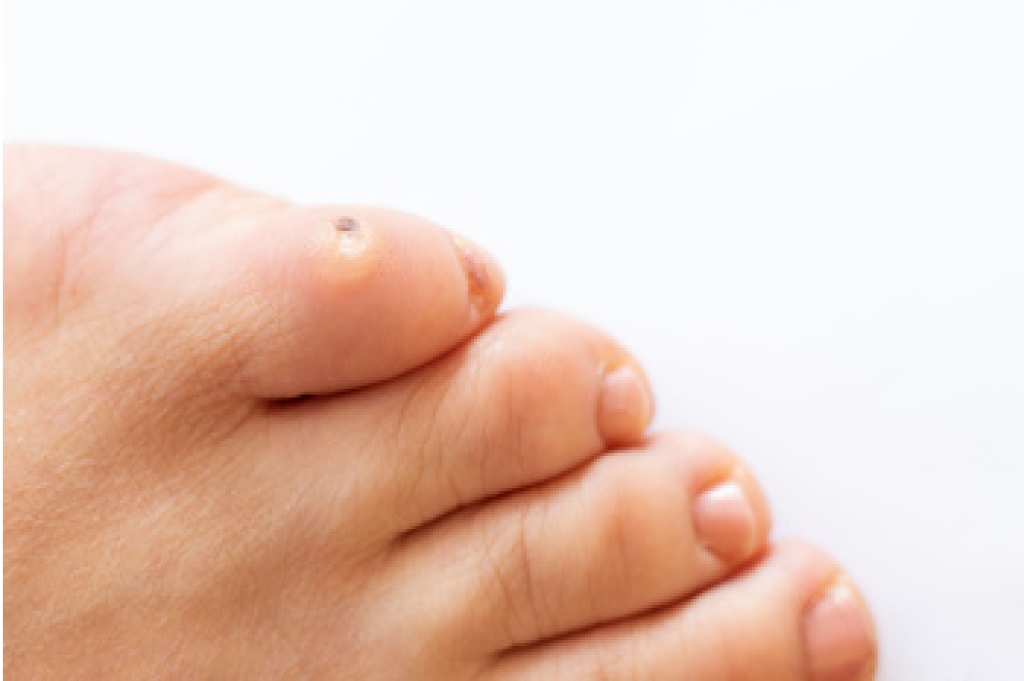Blog
Podiatric Help for Gout on the Rise

Gout, once known as a disease of indulgence, is becoming increasingly common as rates of obesity and high blood pressure climb. This painful condition occurs when uric acid builds up in the bloodstream, forming sharp crystals that settle in joints, most often the big toe. Sudden swelling, redness, and intense pain can make even a bed sheet feel unbearable. Excess weight and certain medications used for hypertension can raise uric acid levels, triggering more frequent attacks. A podiatrist can help identify gout through diagnostic testing, relieve pain during flare-ups, and create a personalized plan to prevent future episodes. This may include shoe recommendations, dietary guidance, and custom orthotics to ease pressure on sensitive joints. If you experience recurring pain in your toe or foot, it is suggested that you schedule a visit with a podiatrist for evaluation and management.
Gout is a painful condition that can be treated. If you are seeking treatment, contact one of our podiatrists from Nashville Family Foot Care. Our practitioners will treat your foot and ankle needs.
What Is Gout?
Gout is a form of arthritis that is characterized by sudden, severe attacks of pain, redness, and tenderness in the joints. The condition usually affects the joint at the base of the big toe. A gout attack can occur at any random time, such as the middle of the night while you are asleep.
Symptoms
- Intense Joint Pain - Usually around the large joint of your big toe, and it most severe within the first four to twelve hours
- Lingering Discomfort - Joint discomfort may last from a few days to a few weeks
- Inflammation and Redness -Affected joints may become swollen, tender, warm and red
- Limited Range of Motion - May experience a decrease in joint mobility
Risk Factors
- Genetics - If family members have gout, you’re more likely to have it
- Medications - Diuretic medications can raise uric acid levels
- Gender/Age - Gout is more common in men until the age of 60. It is believed that estrogen protects women until that point
- Diet - Eating red meat and shellfish increases your risk
- Alcohol - Having more than two alcoholic drinks per day increases your risk
- Obesity - Obese people are at a higher risk for gout
Prior to visiting your podiatrist to receive treatment for gout, there are a few things you should do beforehand. If you have gout you should write down your symptoms--including when they started and how often you experience them, important medical information you may have, and any questions you may have. Writing down these three things will help your podiatrist in assessing your specific situation so that he or she may provide the best route of treatment for you.
If you have any questions, please feel free to contact our office located in Nashville, TN . We offer the newest diagnostic and treatment technologies for all your foot care needs.
When Adolescent Midfoot Pain Signals Something More Serious

While most adolescent foot pain results from sports injuries or overuse, some cases point to a less common cause known as Mueller-Weiss syndrome. This condition involves the gradual breakdown of the navicular bone in the midfoot, leading to aching, swelling, and stiffness that worsens with activity. It often goes unnoticed until walking becomes difficult, or the foot begins to change shape. Because symptoms can mimic more common conditions, proper imaging and evaluation are essential for diagnosis. Early treatment focuses on reducing pressure with custom orthotics and activity changes, while advanced cases may require surgical correction. Persistent midfoot pain should never be ignored. If you or your child is struggling with unexplained discomfort or limited movement in the foot, it is suggested you schedule an appointment with a podiatrist who can identify the cause and provide the right care to restore strength and mobility safely.
Some foot conditions may require additional professional care. If you have any concerns, contact one of our podiatrists of Nashville Family Foot Care. Our practitioners can provide the care you need to keep you pain-free and on your feet.
Rare Foot Conditions
The majority of foot conditions are common and can be treated by a podiatrist. Standard diagnostic procedures are generally used to identify specific conditions and treatment can be rendered. A podiatrist also treats rare foot conditions which can be difficult to diagnose and may need extra attention and care.
There are many rare foot conditions that can affect children. Some of these can include:
- Freiberg’s disease
- Kohler’s disease
- Maffucci syndrome
Freiberg’s disease - This can be seen as a deterioration and flattening of a metatarsal bone that exists in the ball of the foot. It typically affects pre-teen and teenage girls, but can affect anyone at any age. Symptoms that can accompany this can be swelling, stiffness, and the patient may limp.
Kohler’s disease - This often targets the bone in the arch of the foot and affects younger boys. It can lead to an interruption of the blood supply which ultimately can lead to bone deterioration. The patient may limp or experience tenderness, swelling, and redness.
Maffucci syndrome - This affects the long bones in a child’s foot leading to the development of abnormal bone lesions. They are benign growths and typically develop in early childhood and the bones may be susceptible to breaking.
A podiatrist can properly diagnose and treat all types of rare foot conditions. If your child is affected by any of these symptoms or conditions, please don’t hesitate to call our office so the correct treatment method can begin.
If you have any questions, please feel free to contact our office located in Nashville, TN . We offer the newest diagnostic and treatment technologies for all your foot care needs.
Prioritize Your Feet

Our feet are complex and vital structures that often go underappreciated until pain or issues arise. Comprising 26 bones, 33 joints, and an intricate network of nerves and blood vessels, our feet provide the stability and balance essential for every step. Ignoring their health can lead to a range of issues, from mild discomfort to serious conditions, especially in those with diabetes, where foot complications can escalate quickly. Wearing well-fitted shoes and regularly visiting a podiatrist are important steps to ensure optimal foot health, allowing us to prevent or manage issues early. Focusing on foot care helps us maintain mobility and independence, highlighting the importance of paying attention to these important yet often overlooked parts of our body. If you would like to safeguard the health of your feet, it is suggested that you schedule appointments with a podiatrist for routine exams.
Everyday foot care is very important to prevent infection and other foot ailments. If you need your feet checked, contact one of our podiatrists from Nashville Family Foot Care. Our practitioners can provide the care you need to keep you pain-free and on your feet.
Everyday Foot Care
Often, people take care of their bodies, face and hair more so than they do for their feet. But the feet are a very important aspect of our bodies, and one that we should pay more attention to. Without our feet, we would not be able to perform most daily tasks.
It is best to check your feet regularly to make sure there are no new bruises or cuts that you may not have noticed before. For dry feet, moisturizer can easily be a remedy and can be applied as often as necessary to the affected areas. Wearing shoes that fit well can also help you maintain good foot health, as well as making it easier to walk and do daily activities without the stress or pain of ill-fitting shoes, high heels, or even flip flops. Wearing clean socks with closed shoes is important to ensure that sweat and bacteria do not accumulate within the shoe. Clean socks help to prevent Athlete’s foot, fungi problems, bad odors, and can absorb sweat.
If you have any questions, please feel free to contact our office located in Nashville, TN . We offer the newest diagnostic and treatment technologies for all your foot care needs.
Treatment Options for Corns on the Feet

Corns develop on the feet when constant friction or pressure causes layers of skin to thicken on the tops of toes, between toes, or on bony areas. Corns can become painful, making it difficult to walk or wear shoes comfortably. In some cases a corn may become infected if not properly managed. A podiatrist can determine whether the corn is hard or soft in order to provide the best path to relieve discomfort. Treatment may include trimming away hardened skin in a sterile setting to reduce pressure, recommending shoe modifications to decrease rubbing, or prescribing custom orthotics to improve foot alignment and lower stress on affected areas. If a bone deformity, such as a hammertoe, continues to create pressure, surgery may be considered to correct the underlying problem and prevent recurrence. Professional care is important, as attempting to trim corns at home can lead to further injury. If you have a painful corn on your foot, it is suggested that you make an appointment with a podiatrist for an exam, diagnosis, and safe treatment.
Corns can make walking very painful and should be treated immediately. If you have questions regarding your feet and ankles, contact one of our podiatrists of Nashville Family Foot Care. Our practitioners will treat your foot and ankle needs.
Corns: What Are They? And How Do You Get Rid of Them?
Corns are thickened areas on the skin that can become painful. They are caused by excessive pressure and friction on the skin. Corns press into the deeper layers of the skin and are usually round in shape.
Ways to Prevent Corns
There are many ways to get rid of painful corns such as:
- Wearing properly fitting shoes that have been measured by a professional
- Wearing shoes that are not sharply pointed or have high heels
- Wearing only shoes that offer support
Treating Corns
Although most corns slowly disappear when the friction or pressure stops, this isn’t always the case. Consult with your podiatrist to determine the best treatment option for your case of corns.
If you have any questions, please feel free to contact our office located in Nashville, TN . We offer the newest diagnostic and treatment technologies for all your foot care needs.

